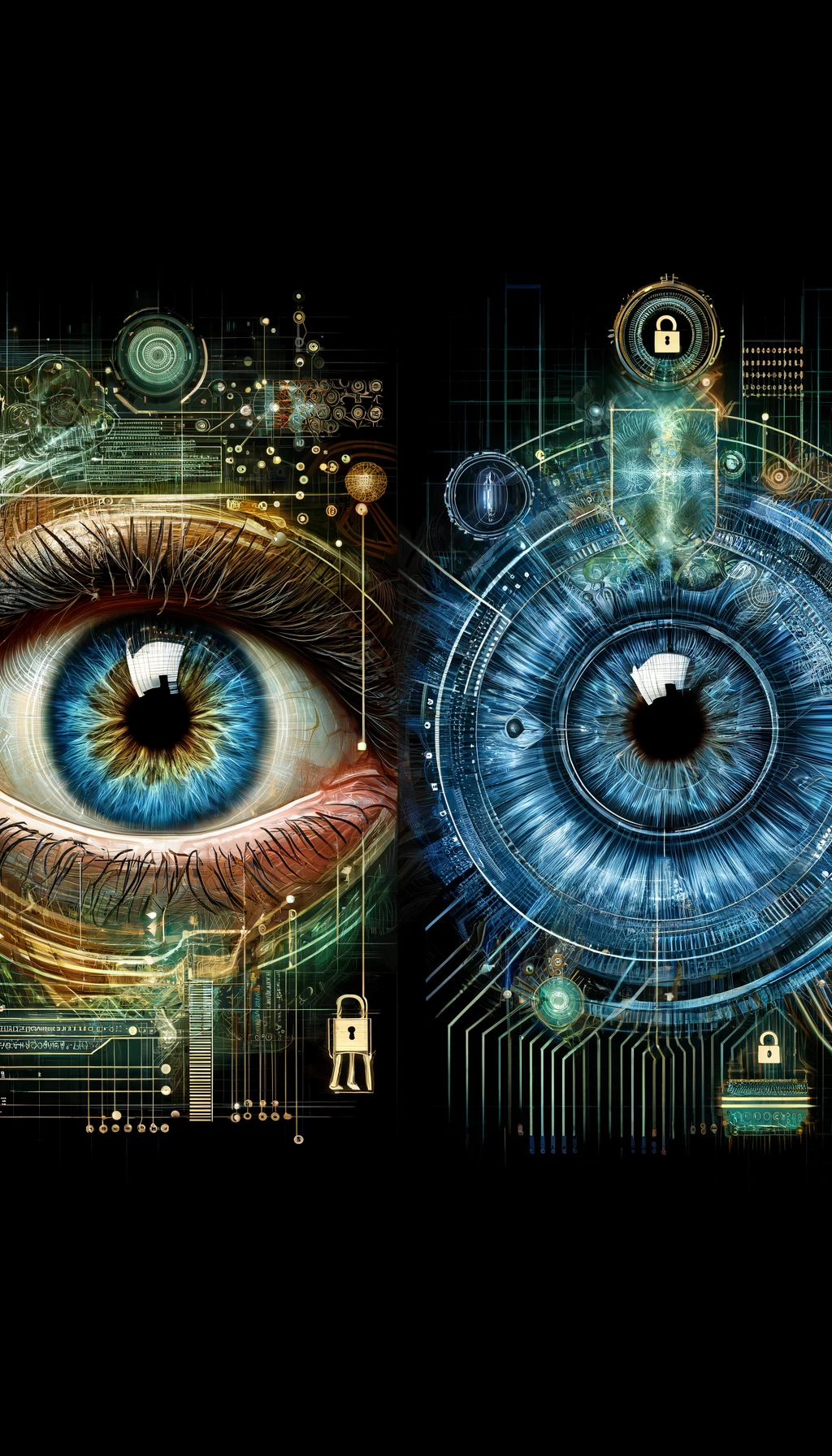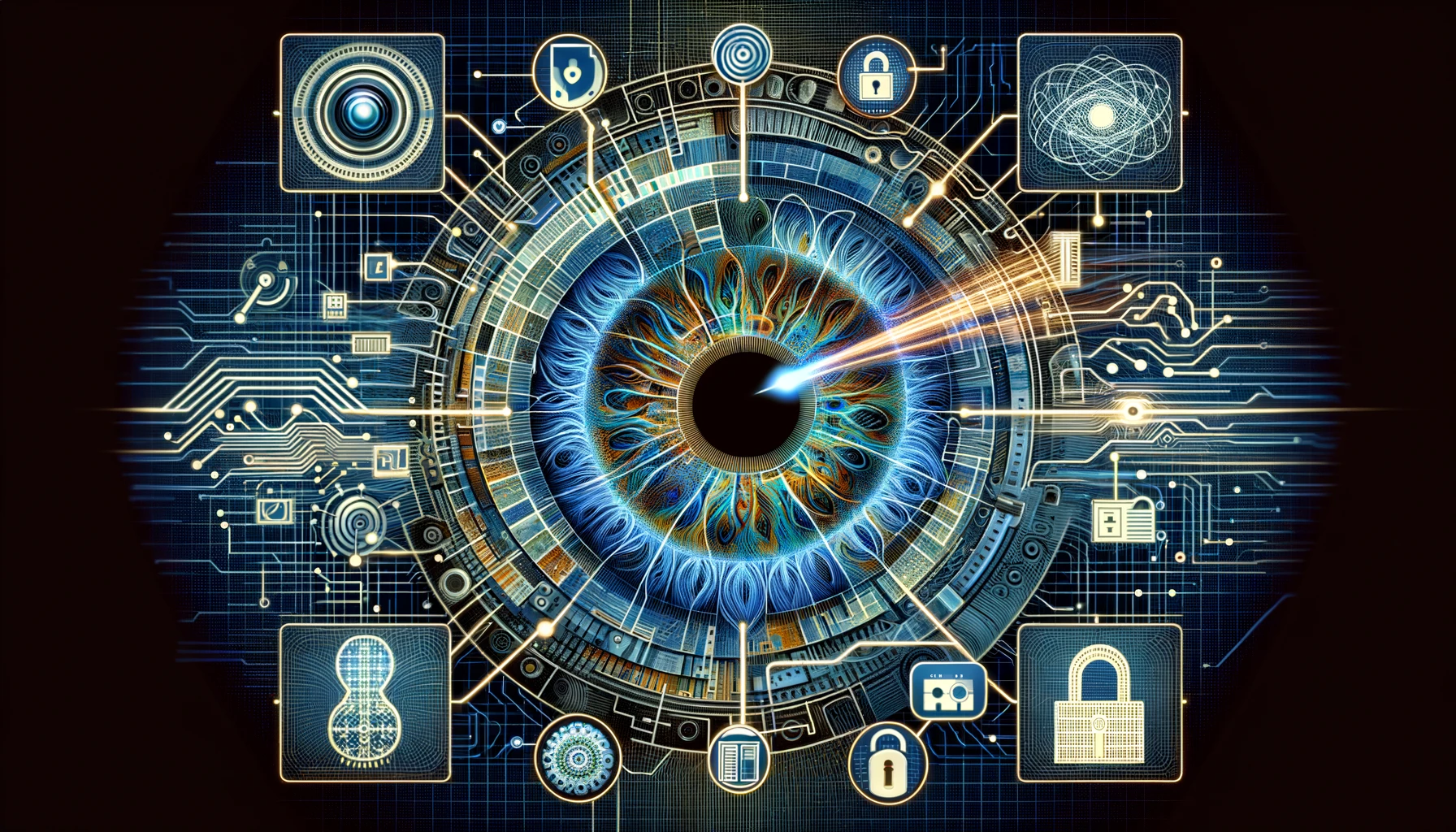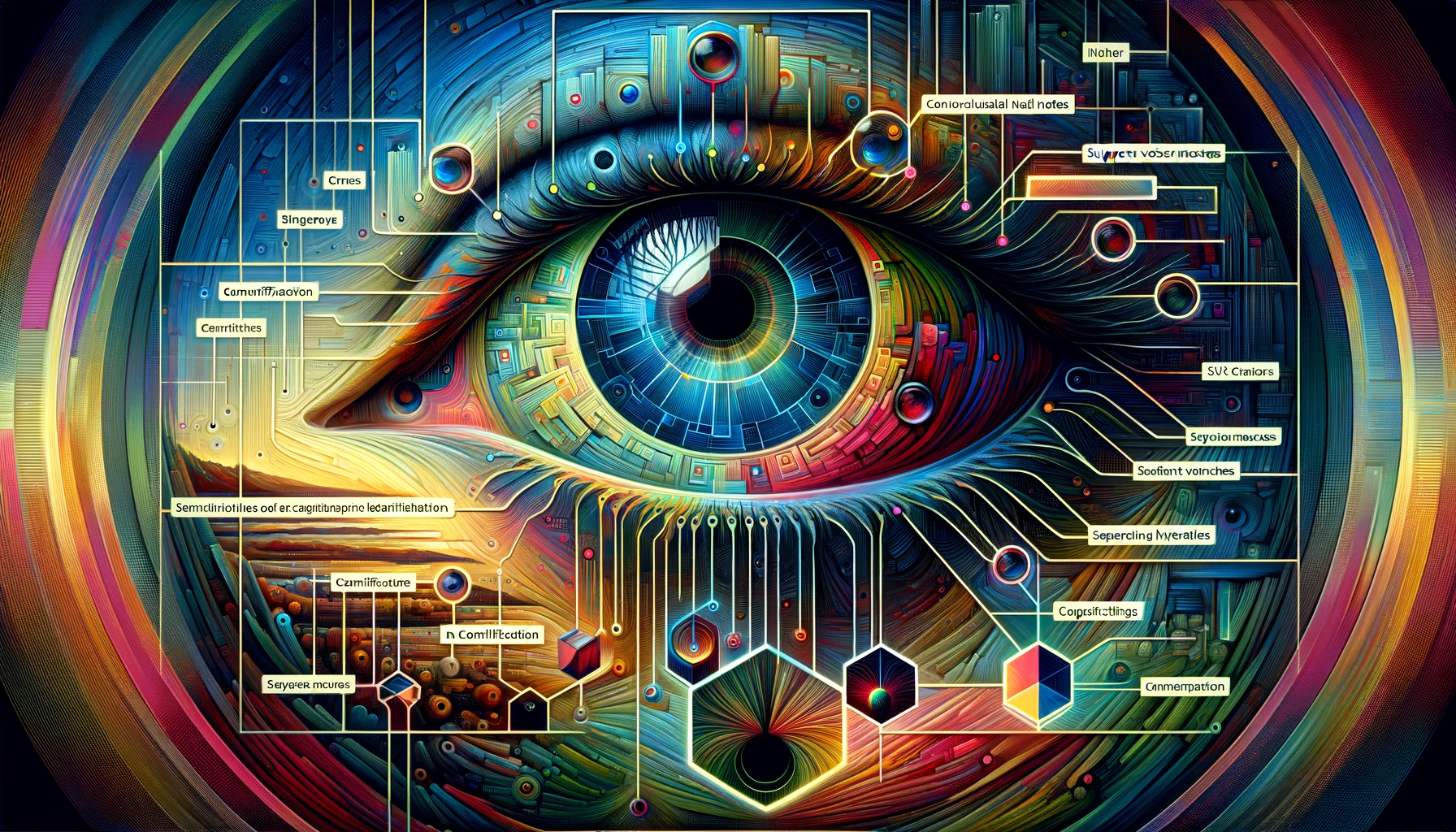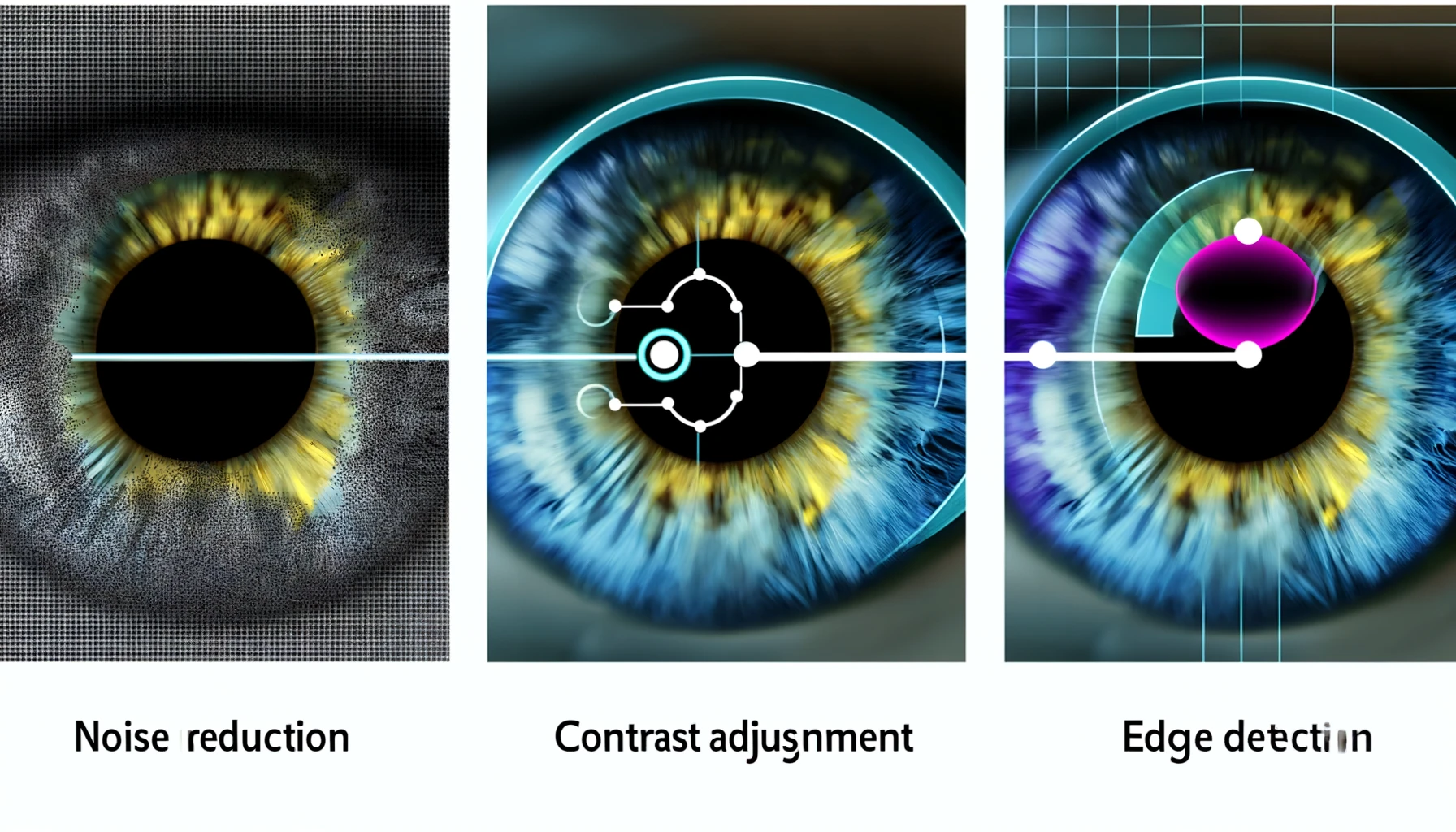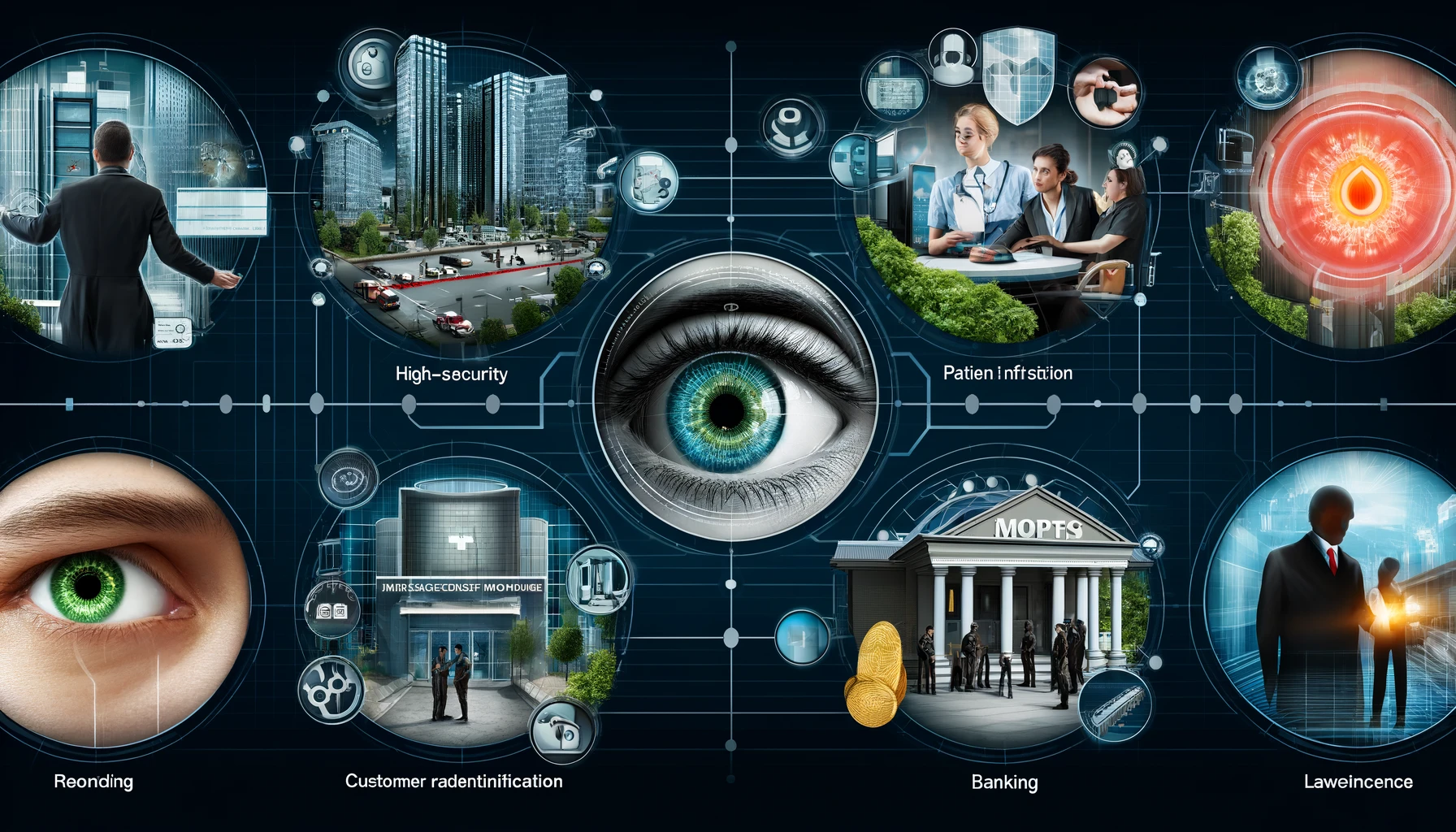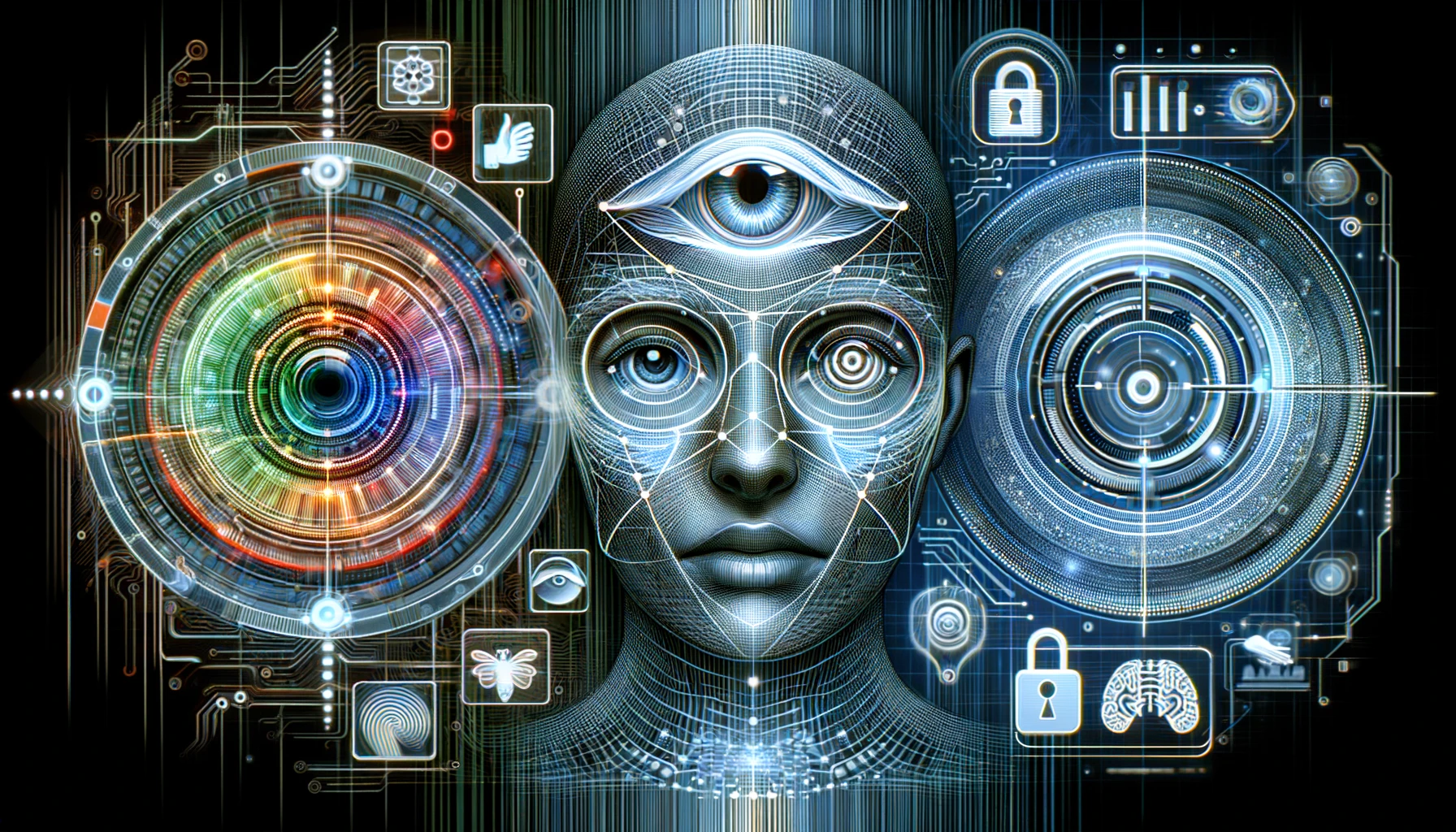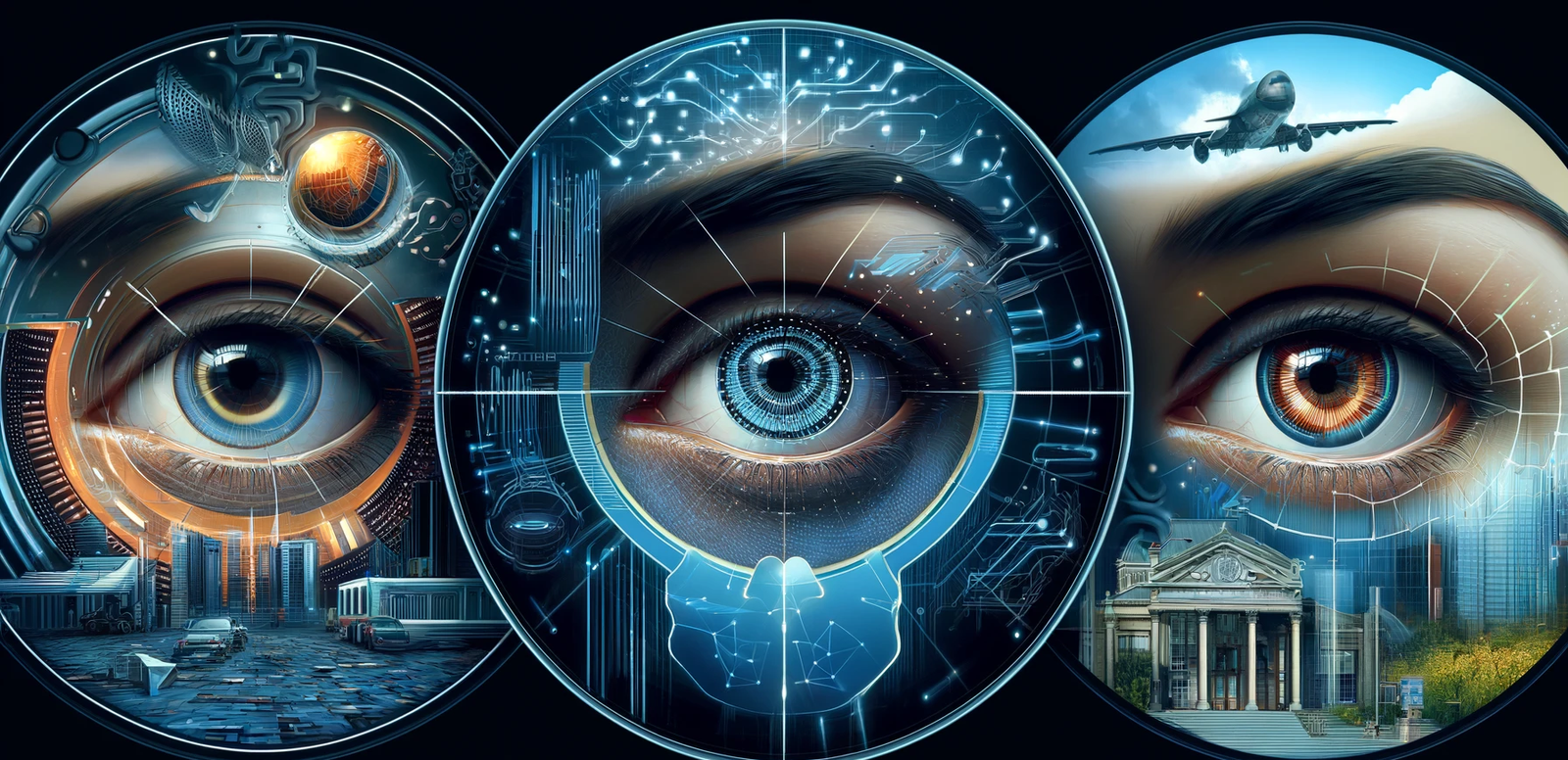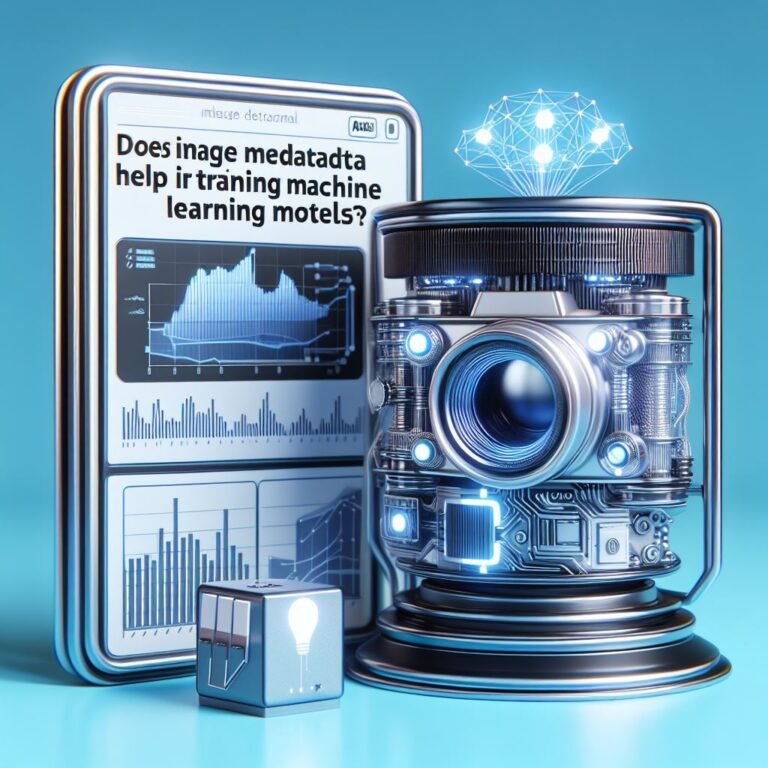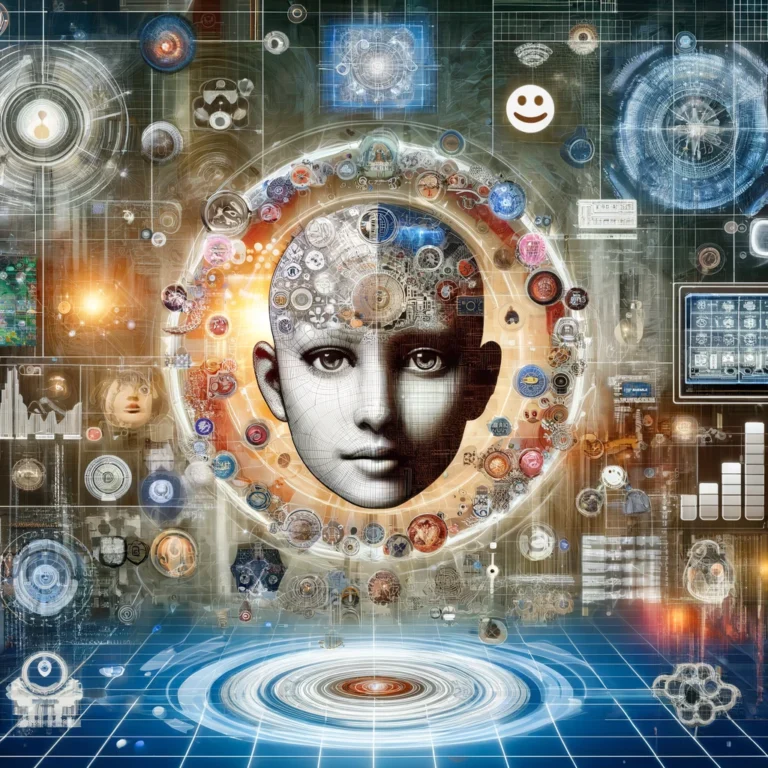Iris Recognition through Machine Learning
Iris Recognition through Machine Learning is the biometric technique of identification based on human iris patterns. This technology applies machine learning to enhance accuracy and efficiency during identification operations. This is a process in which iris images are processed for characteristics to be extracted for matching in the database. The recognition process incorporates image acquisition, preprocessing, feature extraction, and classification. State-of-the-art paradigms of machine learning such as convolutional neural networks (CNNs) are invoked for effective identifications and differentiations among a vast spectrum of iris patterns. In this regard, due to the robustness and precision within machine learning models, occurrences of false matches are greatly reduced, making iris recognition highly secure for security and authentication purposes.
The Anatomy of the Human Iris: Why It’s Ideal for Biometric Identification
The human iris has complex and unique patterns that are stable throughout a person’s life, making it an ideal candidate for biometric identification. Key features include:
- Rich texture and patterns: The intricate details in the iris provide a vast amount of data for recognition algorithms. The texture of the iris includes crypts, ridges, and pigmentation spots, offering a wide array of distinctive characteristics. These features make it highly unlikely for two individuals to have identical iris patterns.
- Stable over time: Unlike fingerprints that can wear down, the iris remains unchanged after the age of one. This stability ensures consistent identification results, eliminating the need for frequent re-enrollment in biometric systems.
- Protected yet visible: The iris is protected by the cornea but still visible for imaging. This visibility through the cornea facilitates non-invasive scanning and imaging, making the identification process quick and user-friendly.
Core Machine Learning Algorithms Powering Iris Recognition Systems
Several key machine learning algorithms are crucial for iris recognition:
- Convolutional Neural Networks (CNNs): Effective in image processing and feature extraction, CNNs are particularly adept at identifying intricate patterns within iris images.
- Support Vector Machines (SVMs): Used for classification tasks, SVMs help in distinguishing between different iris patterns with high accuracy.
- K-means Clustering: Assists in segmenting the iris from the rest of the eye, ensuring that the recognition system focuses only on relevant features.
Historical Evolution of Iris Recognition Technology
The concept of using the iris for identification dates back to the 1980s. Key milestones include:
- 1987: First theoretical foundation for iris recognition.
- 1994: Development of the first commercial iris recognition system.
- 2000s: Integration with machine learning algorithms to improve accuracy.
Comparative Analysis: Iris Recognition vs. Other Biometric Technologies
| Feature | Iris Recognition | Fingerprint Recognition | Facial Recognition |
|---|---|---|---|
| Accuracy | High | High | Moderate |
| Stability Over Time | Very Stable | Stable | Variable |
| Non-Invasiveness | High | Moderate | High |
| Spoof Resistance | High | Moderate | Low |
Step-by-Step Process: How Iris Recognition Systems Work
Image Capture
High-resolution cameras capture the iris image. These cameras are designed to take clear, high-quality images that highlight the intricate details of the iris.
Preprocessing
- Convert to Grayscale: The captured image is converted to grayscale to simplify processing.
- Detect Iris Boundaries: Algorithms identify the boundaries of the iris, separating it from other parts of the eye.
- Normalize the Iris: The iris is scaled to a standard size to account for variations in pupil size and camera distance.
During preprocessing, various image enhancement techniques are applied:
- Noise Reduction: Removes unwanted noise from the image.
- Contrast Adjustment: Enhances the contrast to make iris features more distinct.
- Edge Detection: Highlights the edges within the iris, improving feature detection.
Feature Extraction
Algorithms extract unique patterns from the iris. Common techniques include:
- Gabor Filters: Capture specific frequency and orientation details in the iris texture.
- Wavelet Transforms: Analyze the texture of the iris at multiple scales and resolutions.
These features are encoded into a compact representation, making the matching process more efficient.
Matching
- Compare Features: The extracted features are compared to those in a database.
- Similarity Metrics: Metrics like Hamming distance are used to measure similarity between the features.
Advanced machine learning models, including deep neural networks, enhance the accuracy and speed of the matching process.
Verification
The identity is confirmed based on the matching score:
- Threshold Setting: A threshold is set for the matching score to determine if the identity is verified.
- Acceptance or Rejection: If the matching score exceeds the threshold, the identity is verified; otherwise, it is rejected.
Key Features of Machine Learning Models in Iris Recognition
Accuracy
- High Precision: Machine learning models achieve high precision in recognizing unique iris patterns, ensuring that even the smallest details are captured and correctly identified.
Speed
- Fast Processing: These models can process large datasets quickly, allowing for real-time recognition and instant access to information.
Scalability
- Efficient Handling of Growing Databases: Machine learning models can easily adapt to increased volumes of data, maintaining performance as the database grows.
Robustness
- Resistant to Variations: These models perform well under different lighting conditions, angles, and partial occlusions, ensuring reliable recognition in diverse environments.
Adaptability
- Learning from New Data: Machine learning models continuously improve their performance by learning from new data, adapting to changes and enhancing accuracy over time.
Security
- Secure Data Management: Ensuring the secure handling and storage of biometric data, these models protect sensitive information from unauthorized access and breaches.
Interoperability
- Integration with Other Systems: Machine learning models can be combined with other biometric systems, such as fingerprint or facial recognition, for multi-modal recognition, enhancing overall security and reliability.
These features collectively contribute to the reliability and effectiveness of iris recognition systems, making them suitable for a wide range of applications.
Data Collection for Iris Recognition: Challenges and Best Practices
Challenges
- Quality of Images: Ensuring high-resolution, clear images.
- Variability: Differences in lighting and angles.
- Privacy Concerns: Ethical collection and storage of biometric data.
Best Practices
- Standardized Imaging Conditions: Consistent lighting and positioning.
- Data Augmentation: Increasing the diversity of the dataset using techniques like rotation and scaling.
- Secure Storage: Encrypting biometric data to protect privacy.
Enhancing Accuracy in Iris Recognition with Advanced Machine Learning Techniques
- Deep Learning: Utilizing deeper neural networks for more accurate feature extraction.
- Transfer Learning: Applying pre-trained models to new datasets to improve performance.
- Data Augmentation: Enhancing training datasets with synthetic images to improve model robustness.
Real-World Applications of Iris Recognition Technology
- Security: Access control in secure facilities.
- Healthcare: Patient identification in hospitals.
- Banking: Secure and convenient customer authentication.
- Law Enforcement: Identifying individuals in security databases.
Security Measures: Safeguarding Data in Iris Recognition Systems
- Encryption: Protecting data both in transit and at rest.
- Access Control: Limiting access to sensitive data.
- Regular Audits: Conducting security audits to detect vulnerabilities.
The Role of Artificial Neural Networks in Iris Detection
Artificial Neural Networks (ANNs) are pivotal in:
- Pattern Recognition: Extracting intricate details from iris images.
- Classification: Distinguishing between different iris patterns.
- Learning: Continuously improving accuracy through training.
Impact of Iris Recognition on Privacy and Personal Security
Benefits
- Enhanced Security: More secure than passwords and PINs.
- Convenience: Fast and non-intrusive identification.
Concerns
- Privacy: Potential misuse of biometric data.
- Surveillance: Risk of constant monitoring and tracking.
Future Trends: The Next Generation of Iris Recognition Technologies
- Integration with AI: Combining iris recognition with other AI technologies for multi-modal biometrics.
- Wearable Technology: Implementing iris recognition in smart glasses and contact lenses.
- Blockchain: Using blockchain for secure and decentralized biometric data storage.
Case Studies: Successful Implementations of Iris Recognition
Example 1: Aadhaar in India
- Objective: Unique identification for over a billion citizens.
- Outcome: Enhanced access to services and minimized fraud, ensuring that benefits reach the intended recipients efficiently.
Example 2: Dubai Airport
- Objective: Speeding up passenger processing.
- Outcome: Enhanced security and efficiency, reducing wait times and improving overall passenger experience.
Example 3: Bank of America
- Objective: Secure customer authentication for online banking services.
- Outcome: Increased security and customer satisfaction, with a significant reduction in fraudulent activities.
Example 4: UK National Health Service (NHS)
- Objective: Streamline patient identification and medical record management.
- Outcome: Improved patient care and reduced administrative errors, ensuring accurate and timely access to medical records.
Example 5: United Nations High Commissioner for Refugees (UNHCR)
- Objective: Accurate identification and verification of refugees.
- Outcome: Better resource allocation and improved welfare services for refugees, ensuring that aid reaches the right individuals.
Challenges Facing Iris Recognition and How Machine Learning Helps Overcome Them
Challenges
- Image Quality: Poor lighting and angles can affect accuracy.
- Spoofing: Risk of fake irises.
- Scalability: Managing large databases.
Solutions
- Advanced Algorithms: Improved image processing and feature extraction.
- Liveness Detection: Ensuring the iris is from a live person.
- Efficient Data Handling: Optimized storage and retrieval systems.
Conclusion: The Expanding Horizon of Iris Recognition through Machine Learning
Iris recognition, enabled by machine learning, is radically changing biometric identification due to its precision, security, and convenience, making it a front-runner in many applications. As technology advances, we can expect even safer and more innovative implementations, expanding the horizon of iris recognition. The integration of artificial intelligence and deep learning techniques will enhance the precision and reliability of these systems. Continuous research will likely yield breakthroughs, making the technology more accessible and affordable. Moreover, as more industries adopt iris recognition, security protocols will improve, processes will streamline, and user experiences will enhance. This technology’s potential in border control, healthcare, financial services, and personal device security is immense, promising a future where identity verification is seamless, secure, and efficient. The widespread adoption of iris recognition will likely improve security measures and operational efficiency across various sectors. Advancements in hardware and software will lead to faster, more accurate, and cost-effective solutions, facilitating implementation in high-security environments and common applications like unlocking personal devices or authorizing transactions. In conclusion, ongoing advancements in machine learning and iris recognition will redefine biometric identification, offering unparalleled benefits and opportunities. These technologies will undoubtedly lead to a more secure and efficient future, driven by continuous innovations that expand their applications in exciting new ways.

